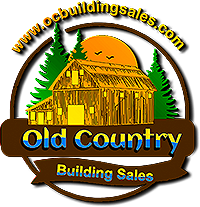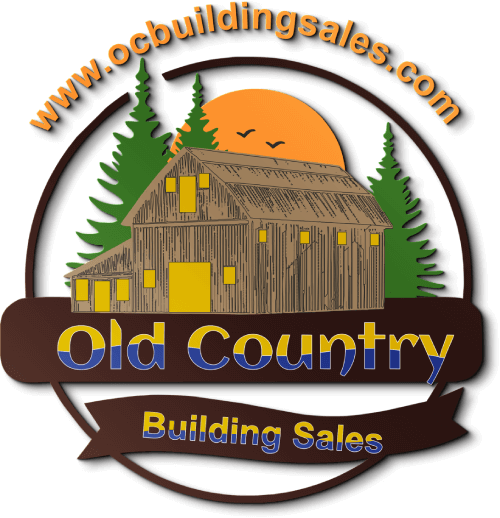Metal Building Warranties for Your Protection
Old Country Building Sales Inc. stands behind every metal building we construct in Muskogee with solid warranty coverage. Our metal building warranties protect against defects in materials and workmanship, giving you peace of mind about your investment. We offer clear, easy-to-understand warranty terms that cover important parts of your building, from the roof to the foundation. Each warranty comes with simple documentation that explains what's covered, for how long, and what to do if you need service.
Your metal building in Muskogee deserves good protection. Our warranties include coverage for the metal roof system, wall panels, and other key components. We explain all warranty details before construction starts, so you know exactly what protection you have. If you ever need warranty service, our local team responds quickly to check and fix any issues. We keep good records of all warranty work and help you maintain your coverage by following simple care guidelines. Plus, we're right here in Muskogee to handle any warranty needs - no dealing with far-away companies or complicated claim processes.
Want to Learn More About Our Metal Building Warranties?
Contact Old Country Building Sales Inc. at 918-265-1825 today. We'll explain how our warranties protect your investment.
6 Month Limited Warranty: Concrete
A "6 Month Limited Warranty" is included with your project; the warranty is valid for *6 months* from time of service. Any treatment methods and scheduling are at the discretion of the contractor.
Warranty does not cover acts of God or damages caused directly from abuse outside of normal usage. Mattingly Concrete does not warrant chips, flaking, spalling, or surface wear in any way.
Sealing your concrete before each winter is highly recommended.
Observation: Exterior concrete - sidewalks, porches, patios, driveways, etc. - are cracked.
Standard: Random cracking of concrete will occur and is to be expected at any point during its lifetime. If settling causes cracks that exceed 1/4" in width within the first 6 months, it will be considered for treatment
Builder’s Responsibility: The builder is responsible for correcting only those cracks that exceed the standard. An appropriate joint or crack filler can be used and is acceptable for a crack up to 1/2 inch in width or vertical displacement.
Homeowner’s Responsibility: For aesthetic purposes, smaller cracks may be filled with a waterproof concrete caulk. While this may reduce the appearance of the crack, it should be noted that there will be a color and texture variance between the original concrete and the caulking
Discussion: Driveways, patios, and sidewalks should have expansion and contraction joints. These joints help guide the natural cracks that will develop. Regularly, cracks will exit or form outside of control joint locations. Random cracking is to be expected.
Observation: Low spots in concrete in which water pockets appear, not caused by conditions stated in the background.
Standard: No measurable water depth exceeding 1/2 inch is acceptable on concrete for more than 24 hours after rain has stopped. This standard does not apply to stamped or decorative surfaces.
Builder’s Responsibility: The builder will correct to meet the standard as needed. Color and texture variations are to be expected.
Observation: Exterior concrete surfaces are spalling, scaling and pitting from pop outs exposing aggregate.
Standard: Spalling, scaling, pitting, or pop outs are to be expected in extreme weather regions.
Builder’s Responsibility: The builder is not responsible for damage that is the result of spalling, scaling or pitting caused by salt, chemicals, mechanical implements, or other factors beyond the builder’s control. *Corrective action can include one of many options include re-sealing or resurfacing the affected area.
Homeowner’s Responsibility: The homeowner should take precaution to reduce or eliminate the exposure of exterior concrete to salt, chemicals, mechanical implements, and other factors which could damage the concrete surface. Homeowners should have their concrete driveways and sidewalks sealed with a penetrating concrete sealer 30 days after it is poured and every fall season, before winter, thereafter.
Observation: Exterior concrete is stained.
Standard: Exterior concrete will stain.
Builder’s Responsibility: None.
Homeowner’s Responsibility: The homeowner should take precautions to prevent petroleum-based products, solvents, and paint from coming in contact with concrete surfaces. By keeping stain remover on hand, many stains can be made less visible if treated immediately. (It should be noted, however, that these products may also weaken the surface of concrete.)
Discussion: Concrete is a porous, natural product that absorbs such substances as petroleum-based products, solvents, and paints. When a liquid enters concrete, it can seep from top to bottom or bottom to top (a stain may appear from underneath the surface, even if nothing was spilled upon the top surface of the concrete). It should also be expected that mud from the construction site could get into the porous surface of concrete. This is beyond the control of the builder and falls within the parameters of this standard.
Concrete consists of a mixture of many natural materials: water, cement, sand, gravel, fly ash and other various admixtures. These materials are combined in many different ways according to the specific use of the finished concrete, regional requirements, and climate. Because it is a natural product, it is difficult to control how it will react to various conditions that are beyond the control of both the builder and the homeowner.
Naturally occurring conditions affect concrete in numerous ways. Exposure to severe weather can damage pavements, driveways, walks, curbs, steps, porches, and slabs in unheated garages. Destructive action from deicing salts may occur whether from direct application or from being carried onto an unsalted area from a salted area, such as on the undercarriage of a car traveling onto an unsalted area from a salted area. Concrete expands and contracts with temperature changes. This is especially a concern during the first year after concrete has been poured, because it still retains a lot of water.
Another characteristic of concrete that is difficult to control is color variations. Concrete itself can have varying colors due to the different types of sand and aggregates used in the mixture. Color variations can also be caused by admixtures such as calcium chloride, (the most commonly used admixture to accelerate the curing process of concrete and to reduce the effects of freezing). If concrete is poured on different days, and the previously poured concrete has had time to cure a bit, color differences will be apparent. Different brands and types of concrete may contain many varieties of sand, cement, admixtures, and aggregate that will result in color variations in the finished concrete. When repairs are made, the concrete used as a filler must be extremely dry to prevent shrinkage. This almost always results in a repair patch that is darker in color than the existing concrete. Because of the previous explanations for color variations, it is to be expected that whenever a repair is made, it is nearly impossible to match the colors of concrete. Because the curing of concrete is a chemical process and can take up to one year to complete, changes in size and strength are to be expected. It is very difficult to control the effects of water evaporation, air bubbles within the concrete, air humidity, and wind. Some chemical processes are only controllable and are the responsibility of the homeowner. Pitting, spalling, or scaling can occur when salt or other deicers are applied directly to the surface of the concrete or when they are indirectly deposited on the surface by tires or feet. These substances cause rapid deterioration of the surface, by both chemically attacking the concrete and by drawing moisture near or within the surface and promoting expansion and contraction of the concrete during the freeze-thaw cycle. Other chemicals, such as lawn fertilizer, can also chemically attack the surface of the concrete, resulting in spalling, scaling, and pitting. Until concrete has cured, it can not withstand extreme weight such as moving vans, school buses, or garbage trucks. It is especially important to limit the amount of weight that is placed upon concrete during the first year because it needs sufficient time to cure and gain strength.
- Warranty Exclusions of the Following Items:
- Excludes Any Displacement or Chipping Between New and Old or Existing Concrete or Pavements
- Sealers
- Drains, Pipes, or Downspouts
- Concrete Patches or Repairs
- Overlay Products
- Epoxies
- Coatings of Any Type
- Special Finishes
- Landscaping
- Asphalt Repairs
- Painting or Caulking
- Woodwork
- Firepits, Benches, and Pergolas
- Concrete Work Designed by Others, Subject to Heavy or Commercial Use, Approaches, Aprons, Shop Floors, or Work Done in Accordance to Outside Source/private Designs or Mixes.
- Concrete Coloration
- Decorative Concrete or Finely Finished Surfaces



